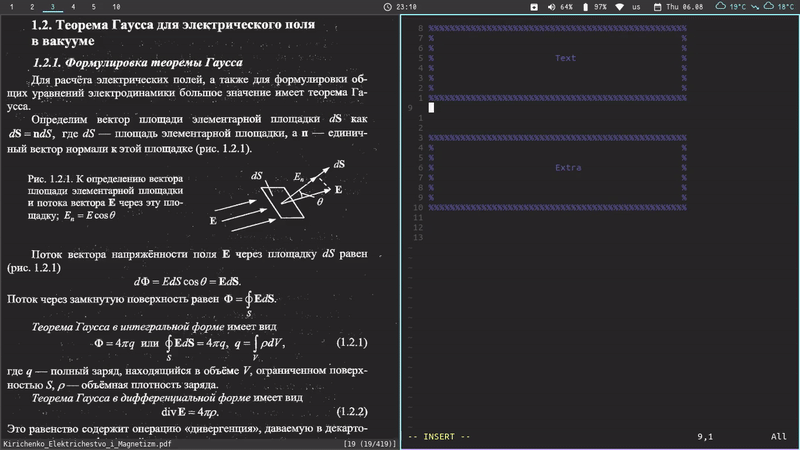
Check out this blog post on how to use this tool and some other tips for adding mathjax (latex) and images to your cards.
Overview
Use vim to rapidly write textfiles immediately importable into anki.
My fork
Same as original, just added my own snippets and used a cloze-deletion template instead of question-answer.
Requirements
- Python >= 2.7 or Python >= 3.4
Installation
Clone the repo and install using pip:
git clone https://github.com/sofiabelen/AnkiVim.git
cd AnkiVim
pip install -e .
You can verify that this step succeeded and see available options by running:
anki-vim -h
Generating Anki Cards
- Call:
anki-vim DECKNAME
-
vim starts with a preformatted card. Start typing the front part of the anki card below "Text", then fill out the back below "Extra". (NOTE: It is important to leave the Text and Extra headers intact throughout)
-
save the file and exit the editor. (vim: ":wq") => the card contents are saved to:
$HOME/.ankivim/decks/DECKNAME/raw_cards.txt. (alternatively, you can specify a custom location for your decks using the--deckpathoption ofscript/anki-vim.py.) -
editor starts right back up to generate a new card for the same deck => Iterate 2.-4. until all cards are generated.
-
to stop the card creation process, simply close your editor ( for vim: ":q" or ":q!", for additional information see this book).
Importing into Anki
Procedure to import anki cards generated by this tool into anki:
-
Open Anki
-
Generate the deck to import into or click on an existing deck
-
Click import and navigate to "/path/to/anki-vim/decks/DECKNAME/raw_cards.txt"
-
check "allow html in fields"
-
Done
Supports
- Latex/mathjax commands of any kind.
- Html tags of any kind (images can be included this way as well).
- Uses snippets. Checkout: snippets.
Images
For adding images, you can use this script. It uses scrot to take a screenshot by letting you select a part of the screen. It then saves it to anki media collection, and you'll get the name of the image in your clipboard (using xclip). There is a snippet to add an image:
-
by itself: write 'img' in beginning of line to trigger.
-
inside a cloze: write 'ci' to trigger.
Paste the image name that was stored in your clipboard inside the "", and you're done!
Disclaimer: Anki doesn't always recognize the image right away, you might have to open the card edditor or click on 'Check media...'. If anyone has a workaround for this, please let me know!
#!/bin/bash
dir=".local/share/Anki2/User\ 1/collection.media/"
name=$(date --iso-8601='seconds' | sed 's/://g').png
scrot -s "$dir$name" && echo $name | tr -d '\n' | xclip -selection clipboard
If you're using i3-wm, add this to your config file to bind the script to Shift+Print (or some other key combination). Make sure the anki-screenshot script is in your PATH.
bindsym --release Shift+Print exec anki-screenshot